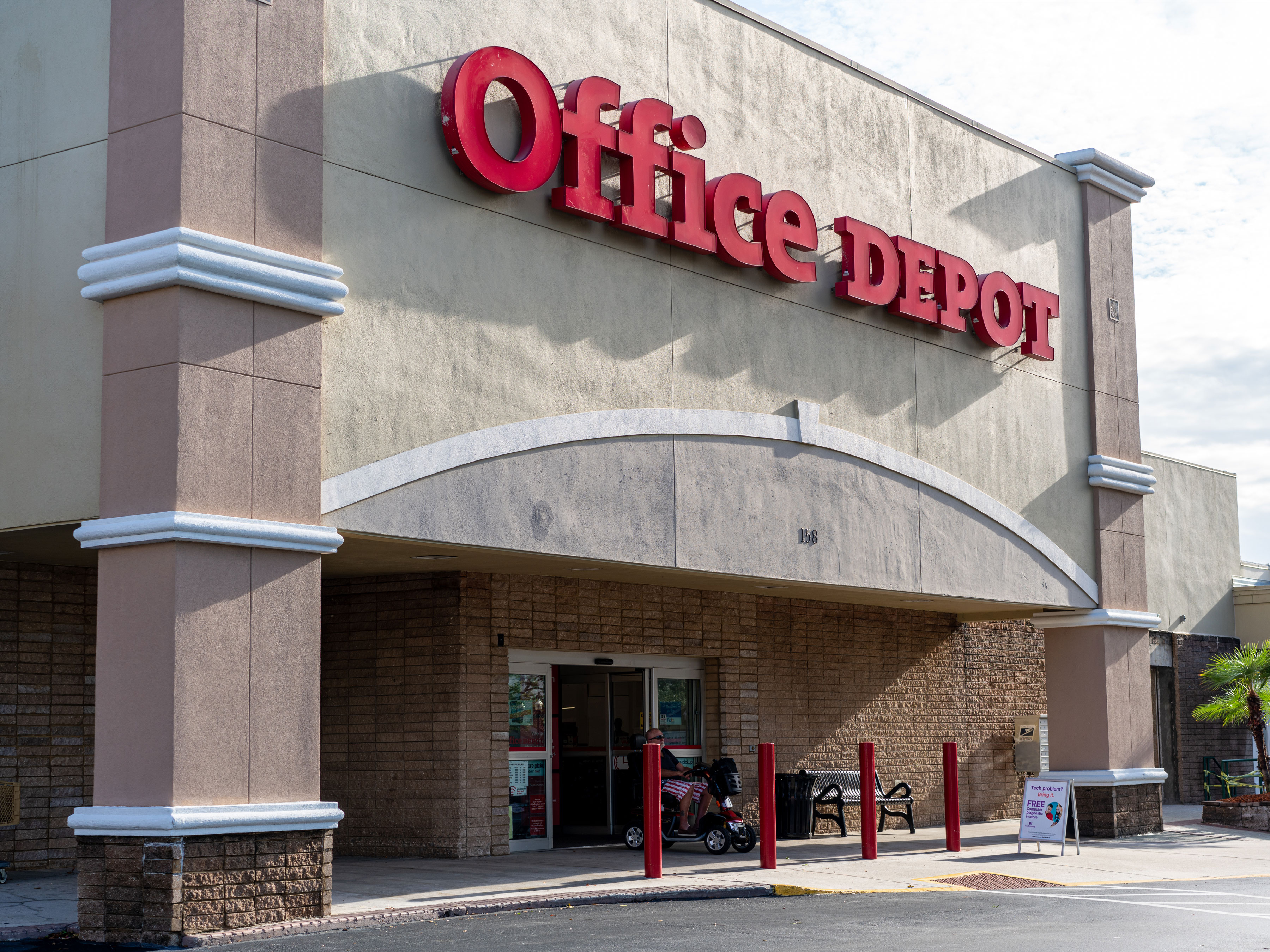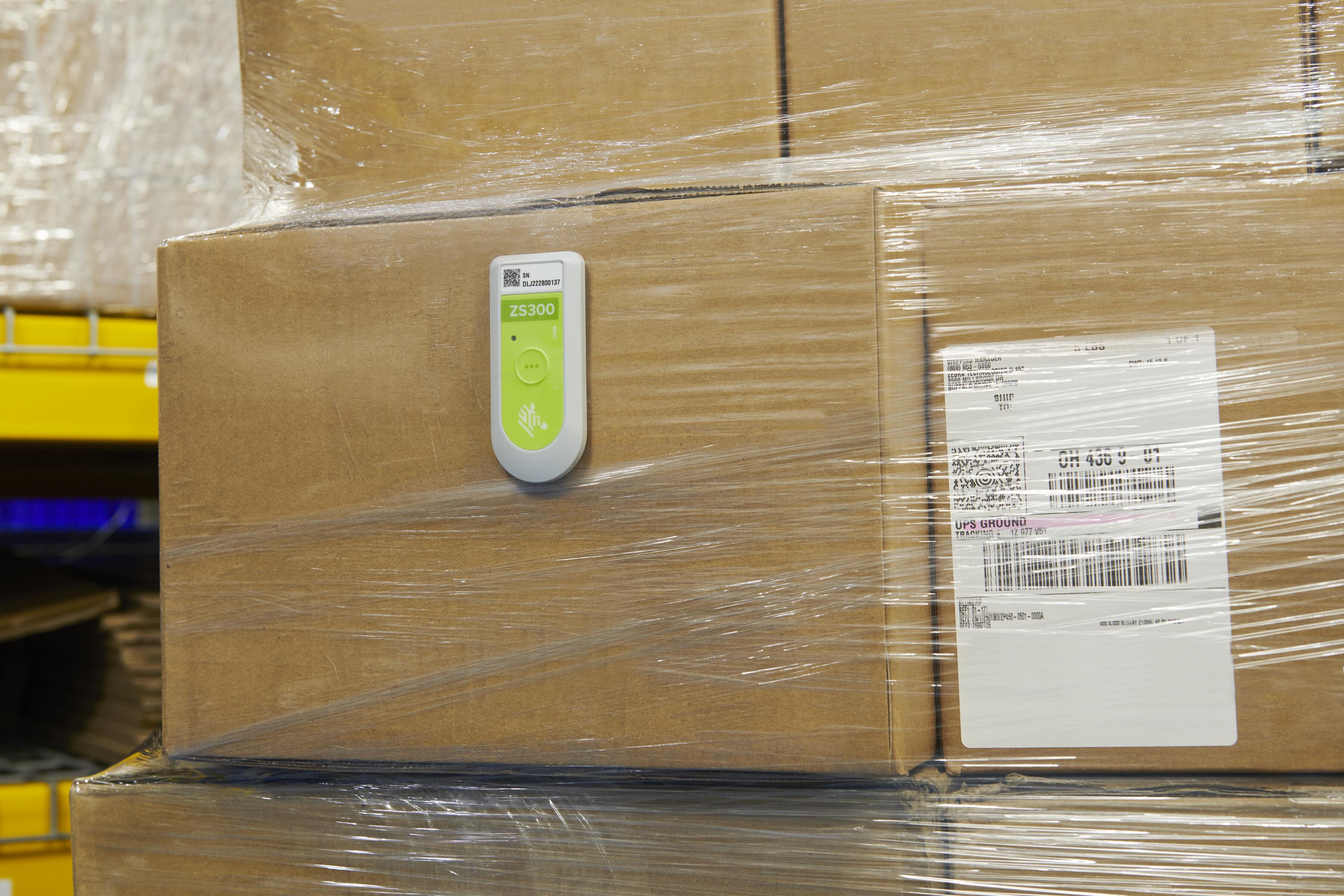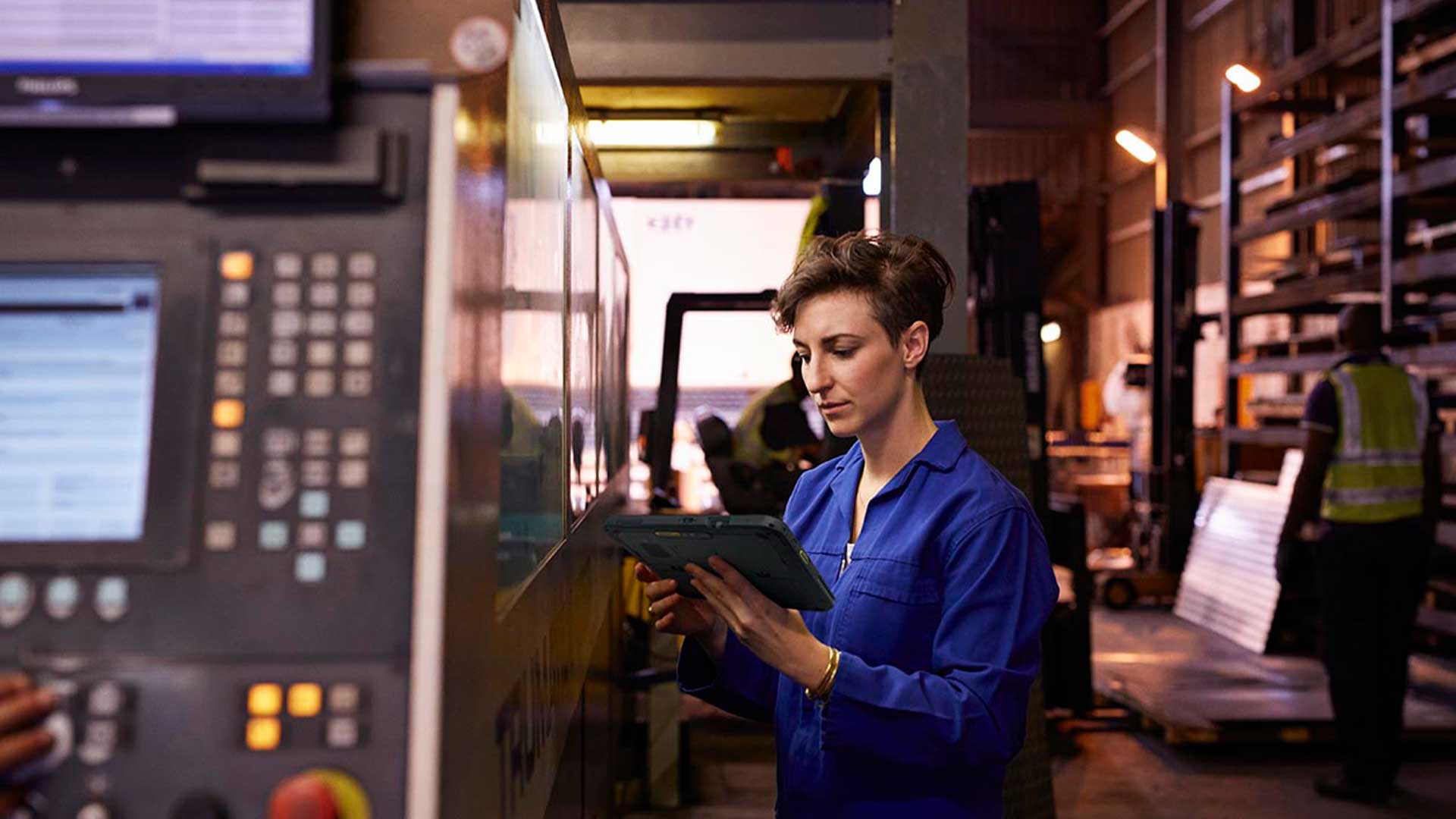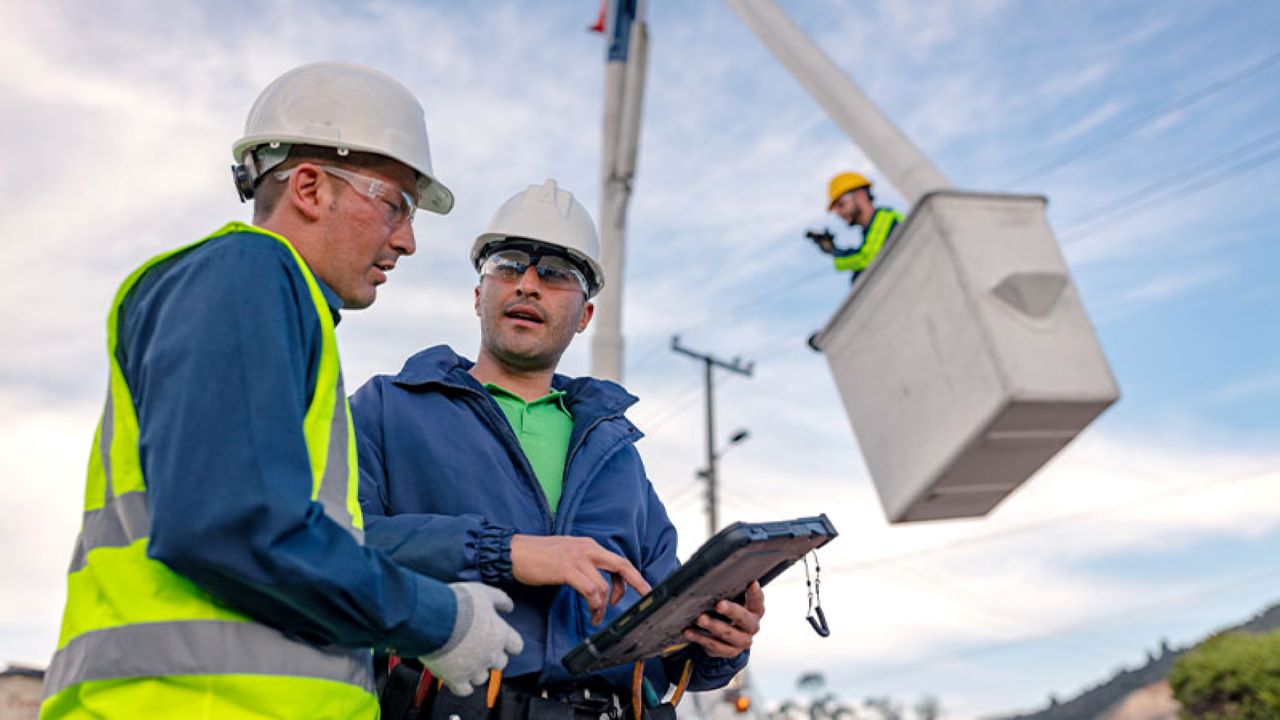
Telcos: Consider Implementing These Technologies to Improve Service Call Response Times and Your Bottom Line
According to Zebra’s “Future of Field Operations” report, telcos and other service providers appreciate the potential impact of more advanced technology tools such as remote monitoring and reporting, predictive analytics, machine learning, augmented reality and autonomous vehicles. Despite technology implementations and adaptation being flagged as an operational challenge, significant investments are being made to implement these technologies across different operational functions, with adoption of these technologies forecasted to grow two to three times over the next few years.
In my estimation, this proves there is demonstrated value in technologies that empower front-line workers to sense, analyze and act on potential issues. Servicing right before a failure is infinitely better than any time after a failure.

Perhaps more interesting are the reported benefits of using mobile technologies which, as we’ve talked about before here on the Your Edge blog, are critical to capturing and then redistributing the data needed to sense, analyze and then act on what’s happening at the operational edge:

Even more beneficial than the positives of reduced operating costs and liability exposure is the increase in worker satisfaction. I think there are two reasons for this improved worker satisfaction:
- Having the right tools to be successful is rewarding to individuals.
- The fact that the organization is supporting and investing in its workers can have a profound impact on employee morale and drive greater adoption.
In a way, mobile technology adoption in field service environments mirrors the adoption trends of automotive safety systems discussed in my previous blog post. While many consumers didn’t necessarily ask for advanced driver assistance systems (ADAS) technologies, people who eventually experienced them ended up relying on them and insisting that their next vehicle include these features. And those few features that didn’t work well out of the gate were immediately prioritized for improvement, not removal.
For example, Cadillac, an industry leader in Lane Departure Warning and other ADAS features, first implemented a system that beeped if the car was drifting toward the edge of the lane. It warned both the driver and the other vehicle occupants that the driver made a mistake. That was short lived. At first, engineers changed it into a vibration-only notification style, then quickly evolved to an automated feature that would gently move the car back to the center of the lane. Most cars with Lane Departure systems now guide the car back to the center with the option for driver override, if necessary.
Similarly, there was some hesitation to implement mobile technologies when they first became available several decades ago because service providers didn’t want to disrupt workflows or introduce any more complexity to already-complex business processes. Plus, there’s always uncertainty in the unknown: will it work as promised and deliver the return on investment (ROI) needed to justify such significant operational changes?
Fortunately, service providers who were very strategic in their mobile solution designs and deployments proved to others that the rewards far outweigh any perceived risks – and that most of those risks can be mitigated by investing in the right mobile technology hardware and software components for the job at hand.
That leads us to another key finding from Zebra’s “Future of Field Operations” study: rugged devices are absolutely preferred right now in the telecom and field service sectors. Whether it is determined that a smartphone-type handheld mobile computer or full-size tablet is the better form factor for certain workers and workflows, organizations insist that they must be “rugged.”

Why rugged? Because mobility tools must be available to workers at all times in order to be valuable to any organization with field operations. These computing devices are how telco equipment installers and maintainers capture and access critical operational data in real time in harsh environments. If they go down for any reason, then workers and, potentially, equipment could go offline. That is why around-the-clock device availability is driving purchasing decisions in this sector right now, not reduced purchase price (which, ironically, increases downstream costs).
As the study results show, the fundamental mobile workflow functions that are deemed most critical require a constant level of wireless network connectivity, secure access to specialized business systems and easy viewability of detailed images and graphics, even in direct sunlight. They also require an extreme level of device reliability. These aren’t actions that can be managed easily offline.
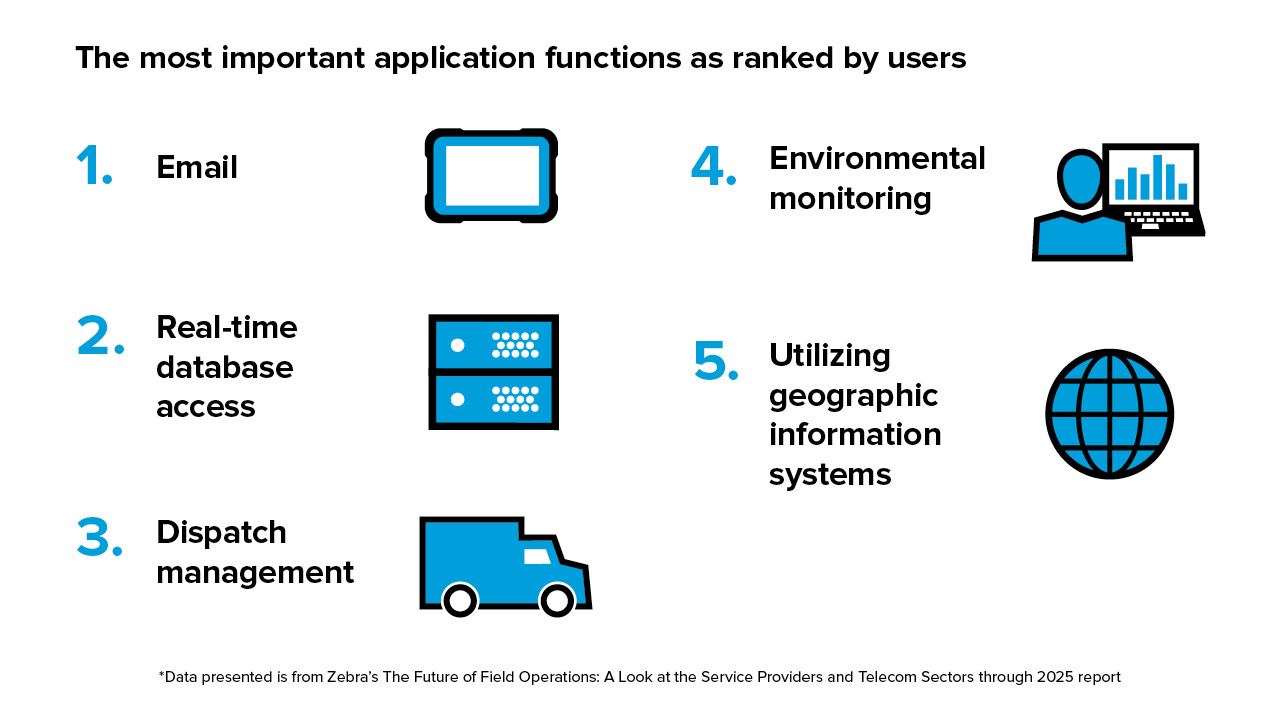
For example, your technicians can’t access geographic information systems (GIS) to map environmental reports into a real-time database to which they were dispatched if their mobile devices are out of operation.
Now, I’ve heard some field service organizations say that they don’t believe enterprise-grade rugged devices are different enough from commercial or even consumer devices to warrant their purchase price. They don’t understand what could be that different.
This too happens a lot when automotive makers talk about the benefits of certain technology features that will save us from those rare but real moments of inattention. Lots of drivers don’t understand how ADAS could possibly work. How can the car know if I’m wandering or want to move toward the lane markings? Whether you understand how it could work or not, it does work in the vast majority of cases. And it is designed to help you when you need it while never removing control from the driver – you can still intervene at the moment it’s needed, if needed.
This is often attributed to a logical fallacy called “Argument from Incredulity” which states “Since I don’t understand it, it can’t be true.”
“Flat earthers,” it might be said, fall for this logical fallacy.
However, failing to trust in the communicated (and proven) benefits of ADAS or enterprise-grade, rugged-to-the-core technologies is highly risky.
Truly rugged devices – the ones needed to keep field service workers online and productive in harsh and remote environments – aren’t made rugged by just adding rubber bumpers to the frame or using a “protective” case. Thousands of decisions made during the design phase of these devices are based on the anticipated field use and decades of experience studying, testing and truly understanding the functional form requirements for certain use cases and environments. Power connectors are hard mounted internally, not just soldered on the printed circuit board, because that has been identified as a known failure point, just to give you one example.
Therefore, a decision about whether or not you, as a service provider, should use truly rugged, enterprise-grade devices should be based on whether or not you have the need for rugged devices at all. You must calculate the value of uptime and the cost of an idled service person and disappointed customer.
Don’t assume that mobile devices sharing the same basic shapes operate the same way or offer the same feature set or workflow capabilities. Purpose-built rugged handheld computers and tablets are designed from the ground up to perform differently, and they will make a world of difference on your organization’s ROI, your customer’s satisfaction and your workers’ happiness.
Why?
The 400+ service provider decision makers who responded to Zebra’s “Future of Field Ops” study said it best: the use of advanced technologies to “sense, analyze and act on issues” and the dependable (i.e. rugged) mobile devices that enable these advanced technologies to work to their full potential ultimately yields increased productivity, increased accuracy (first time fix rate) and increased equipment availability. Many actually expect the use of mobile devices to roughly double these benefits within the next year!
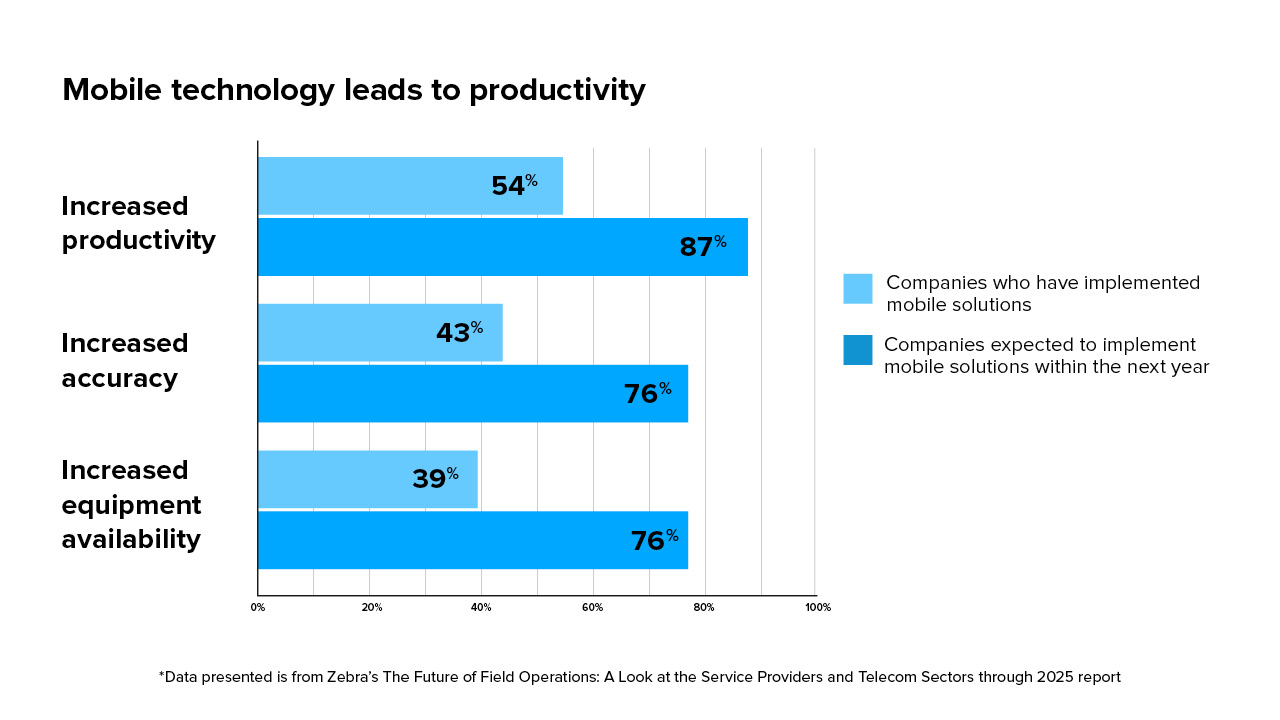
In other words, telecom and field service organizations that want to maximize the output of their workers and equipment and mitigate costly mistakes, oversights and system failures use the best technology tools available today and invest in better ones when they become available tomorrow. Strategic modernization matters. It also drives measurable improvements in customer satisfaction, cost control and employee retention.
